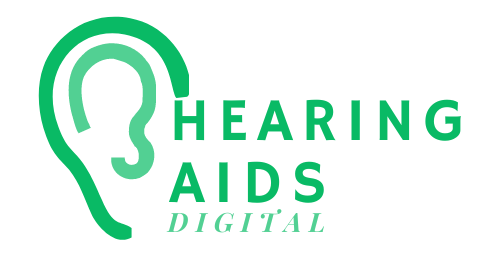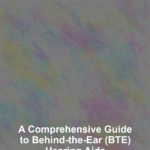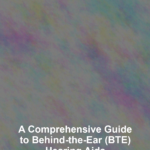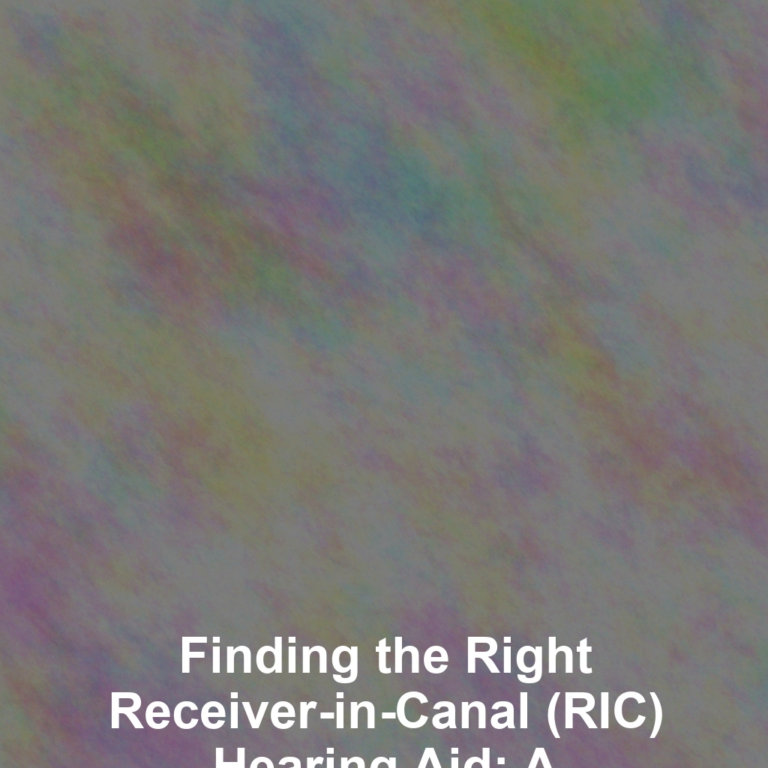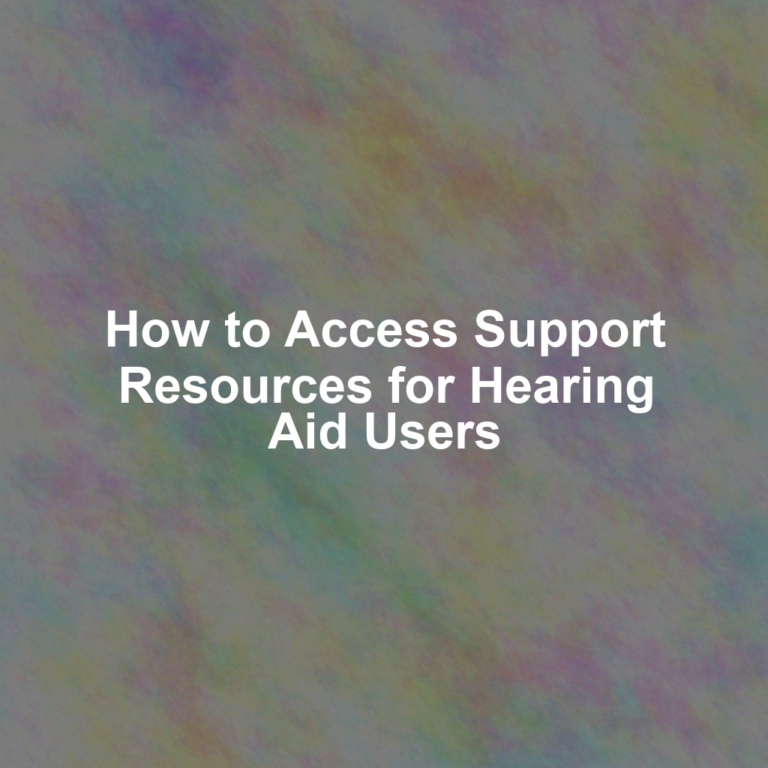Essential Factors Influencing Hearing Aid Pricing Dynamics
To truly grasp the intricacies of hearing aid costs, one must delve into several essential factors that play a pivotal role in determining pricing structures. As you embark on your journey towards better hearing, it is crucial to understand how elements like technological advancements, brand reputation, and personalised customization significantly influence the overall costs associated with these indispensable devices. This knowledge will empower you to make informed decisions about your hearing health investment.
Investigating How Technology Shapes Hearing Aid Pricing

The transformation of hearing aid technology has been remarkable, with contemporary devices now boasting extraordinary capabilities that significantly improve sound clarity and enhance the overall user experience. For instance, today’s hearing aids equipped with cutting-edge digital signal processing technology can efficiently filter out background noise, allowing users to focus on conversations even in bustling environments. The sophisticated nature of these devices often commands a higher price, reflecting their enhanced functionalities and the state-of-the-art technology incorporated within them, which can provide immense benefits to users.
Investing in superior technology typically results in a vastly improved hearing experience. Many users find that premium models incorporate features such as directional microphones, which significantly bolster sound clarity and spatial awareness. Furthermore, some advanced hearing aids utilise artificial intelligence to automatically adjust sound settings based on the surrounding environment, representing a major advancement that caters to a wide range of listening scenarios, thereby enhancing the user’s auditory experience.
When considering hearing aid costs, it is wise to evaluate the value you place on these technological features. For many users, the improvements in their quality of life achieved through these enhancements can justify the initial financial outlay, leading to more fulfilling daily interactions and experiences.
Examining the Influence of Brand Reputation on Hearing Aid Pricing
The standing of a brand is a significant factor that impacts pricing of hearing aids. Established manufacturers known for their reliability and high-quality production often command higher prices for their offerings. Renowned brands typically allocate substantial resources towards research and development, resulting in superior products that come with commendable customer support and warranty options, providing additional peace of mind to consumers.
Consumers often opt to invest more for the assurance of receiving a high-quality device paired with reliable customer service. For instance, brands that offer extensive fitting services and ongoing support can validate their higher prices. Moreover, many manufacturers provide trial periods, allowing potential users to test their devices before making a financial commitment, which fosters consumer trust and encourages investment.
It is essential to conduct thorough research and compare various brands, keeping in mind that higher prices do not always guarantee better value. A reputable mid-range brand may offer outstanding features at a fraction of the cost of luxury brands, making it a viable option for those who are budget-conscious yet still desire quality.
Understanding the Importance of Customisation and Additional Features
Personalisation is a crucial element that significantly affects the cost of hearing aids. Tailored fittings ensure that the device fits comfortably and effectively within the ear, which is vital for optimal performance and user satisfaction. Generally, custom-fit hearing aids tend to be more expensive than standard models, reflecting the additional expertise and time required for personalisation, which can greatly enhance the user’s experience.
Additionally, features like Bluetooth connectivity—which enables users to stream music, phone calls, and other audio directly to their hearing aids—can also contribute to increased costs. These modern functionalities enhance the versatility of the devices, allowing for seamless integration into daily activities and improving user convenience.
Beyond personalisation, many hearing aids now provide smartphone applications that allow users to effortlessly control settings, further boosting their appeal. However, while these advanced features may justify a higher price, prospective buyers should carefully assess their desire for the latest technology against their budget constraints. In certain cases, selecting a more basic model could adequately meet your needs without imposing undue financial strain.
Diving into Different Types of Hearing Aids and Their Pricing Structures

When evaluating hearing aid costs, it is essential to comprehend the different types available. Each model caters to specific needs and preferences, with prices varying significantly based on their functionalities and designs, thus impacting the overall investment required for each option.
Behind-the-Ear (BTE) Hearing Aids: A Versatile and Affordable Option
Behind-the-Ear (BTE) models are among the most widely recommended types of hearing aids, primarily due to their affordability and adaptability to various degrees of hearing loss. These devices comfortably rest behind the ear, with a tube directing sound into the ear canal. The technology housed within the BTE casing allows for a diverse range of features, often available at a more accessible price point compared to their in-ear counterparts, making them an appealing choice for many users.
BTE hearing aids cater to individuals experiencing mild to profound hearing loss, rendering them a versatile solution for a broad spectrum of users. Their robust design can accommodate larger batteries, resulting in extended battery life—an essential advantage for those who prefer not to frequently replace batteries, thereby enhancing convenience.
Although they may be more visible than other types, many users appreciate the comfort and ease of handling offered by BTE models, especially since audiologists can adjust them with greater ease. For individuals seeking effective hearing aids without incurring high costs, BTE models represent a practical and valuable choice in the hearing aid market.
In-the-Ear (ITE) Hearing Aids: Discreet Comfort and Functionality
In-the-Ear (ITE) hearing aids provide a more discreet alternative compared to BTE models, as they are custom-made to fit snugly within the outer ear. This level of personalisation not only enhances comfort but also improves aesthetic appeal, making them less noticeable than bulkier counterparts, which may be a significant consideration for some users.
Typically, ITE devices come equipped with advanced features, including noise reduction technology, which greatly enhances user experience by minimising background noise. However, the trade-off for their discreet design often involves a higher price point due to the personalised fitting process and the advanced technology integrated into the device, which ultimately contributes to a superior hearing experience.
For individuals who favour a subtle appearance yet require robust hearing support, ITE models can be an excellent choice. Although they may necessitate more frequent battery changes owing to their smaller size, many users find that the trade-off is worthwhile for the sake of comfort and unobtrusiveness.
Completely-in-Canal (CIC) Hearing Aids: The Pinnacle of Discretion

For those seeking the utmost discretion, Completely-in-Canal (CIC) models represent the smallest hearing aids available on the market. These tiny devices fit snugly within the ear canal, rendering them nearly invisible to others. Their compact design, however, comes with a premium price tag due to the intricate customisation required for each unit, reflecting the meticulous craftsmanship involved.
CIC models are particularly appealing to individuals with mild to moderate hearing loss and are often favoured by younger users or those who simply prefer a discreet appearance. Despite their small size, many of these hearing aids deliver excellent sound quality and incorporate features such as noise cancellation and feedback suppression, thereby enhancing user satisfaction and performance.
However, users should be aware that the compact design may limit certain functionalities, such as battery size and volume control options. Nevertheless, for individuals seeking a non-intrusive hearing solution, CIC models present a compelling option that balances aesthetics with functionality, catering to those prioritising discretion in their hearing aids.
Receiver-in-Canal (RIC) Hearing Aids: Merging Comfort with Performance
Receiver-in-Canal (RIC) hearing aids offer an ideal blend of comfort and performance, featuring a sleek design that sits comfortably behind the ear while placing the receiver in the ear canal for superior sound quality. This model strikes a balance between visibility and functionality, catering to individuals with mild to moderate hearing loss, thereby expanding their appeal.
Generally, RIC models come equipped with advanced features such as wireless connectivity to smartphones and other devices, allowing for a more integrated user experience. Their ergonomic design and lightweight construction make them comfortable for extended wear, particularly appealing to tech-savvy users who desire seamless integration with their digital lifestyles and everyday activities.
While RIC models may be priced at a mid-range point, their versatility and superior sound performance frequently justify the investment. For many users, the combination of comfort, functionality, and aesthetics makes RIC hearing aids a preferred choice in the marketplace.
Open-Fit Models: Experience Natural Listening
Open-Fit models are specifically designed for individuals with mild to moderate high-frequency hearing loss. This innovative design allows natural sound to enter the ear while amplifying specific frequencies, creating a more natural listening experience. These models are particularly beneficial for those who find traditional designs too constrictive or uncomfortable, thereby enhancing user satisfaction.
The costs associated with Open-Fit models can vary widely, largely depending on the features offered. While some users may opt for basic versions, others might prefer advanced models equipped with sophisticated technologies such as feedback cancellation and directional microphones, which can enhance sound quality and user experience.
Users appreciate the discreetness of Open-Fit models, which are less visible than traditional BTE devices. As hearing aids continue to evolve, Open-Fit options exemplify how technology aligns with user needs, offering effective solutions that are both practical and appealing, thereby ensuring accessibility for a broader audience.
Gaining Insight into Insurance and Financial Assistance for Hearing Aids
Navigating the financial landscape of hearing aid costs can often feel daunting; however, understanding the available financial assistance options can alleviate some of that burden. Health insurance, government programmes, and non-profit organisations may provide valuable support to help manage the costs associated with acquiring hearing aids, making them more accessible to those in need.
Health Insurance Coverage and Hearing Aid Support
Many individuals are surprised to learn that not all health insurance plans include coverage for hearing aids. Nevertheless, some plans do offer partial coverage, which can significantly lower out-of-pocket expenses. It is crucial to examine your policy closely and consult with your insurance provider to fully understand the coverage limits, deductibles, and any specific requirements for claims related to hearing aids.
Health insurance coverage for hearing aids can vary significantly based on the provider and plan type. Some plans may only cover specific brands or models, while others might necessitate prior authorisation or require that a particular hearing assessment be completed before coverage is activated.
Navigating the complexities of insurance can be frustrating, but achieving a clear understanding of your benefits can make hearing aids more affordable. In some instances, insurance may also cover audiologist appointments, fittings, and follow-up visits, contributing to overall savings and making the hearing care process more manageable for users.
Government Programs Offering Financial Assistance for Hearing Aids
In numerous regions, government programmes are available to provide financial assistance or subsidies for hearing aids, recognising the significance of hearing health as a public health concern. Some countries have initiatives specifically designed for elderly individuals or low-income families, ensuring that those in need can access hearing aids without facing overwhelming financial hardship.
These programmes may involve sliding scales based on income, allowing individuals to contribute a portion of the costs while the government subsidises the remaining amount. Additionally, certain areas have initiatives aimed at supporting children with hearing impairments, offering resources and assistance to families navigating the process of acquiring hearing aids for their children.
Researching local resources and government offerings specific to your area is vital. Many community health centres or advocacy groups provide guidance on navigating these programmes, working tirelessly to ensure that financial barriers do not prevent individuals from receiving the essential hearing support they require.
Non-Profit Organisations Assisting with Hearing Aid Costs
Numerous non-profit organisations are dedicated to providing financial assistance or discounts for individuals in need of hearing aids. These organisations often collaborate with manufacturers and audiologists to facilitate affordable access to hearing health solutions, thereby enhancing accessibility for those facing economic challenges.
For eligible individuals, these programmes can significantly reduce overall costs. Some organisations may provide refurbished devices at reduced prices or connect individuals with funding sources for purchasing new hearing aids. Additionally, they often offer valuable resources and information on effectively managing hearing loss, which can empower users to take control of their hearing health.
While reaching out to non-profits may initially seem intimidating, many organisations are eager to assist and empower individuals to regain their hearing. A bit of research can lead to discovering life-changing resources and support that can make a significant difference in someone’s life, reinforcing the importance of community and assistance.
Additional Considerations When Evaluating Hearing Aid Expenses
While examining hearing aid costs, it is crucial to recognise that the initial purchase price is just one aspect of the overall investment in hearing health. Several additional costs can influence your total expenditure, including ongoing maintenance, professional services, and potential upgrades.
Professional Fees for Audiologist Services and Their Importance
Engaging with an audiologist is a vital step in the hearing aid process, and these professional services come with associated fees. Audiologists not only perform initial hearing assessments but also provide essential fitting services to ensure that your hearing aids are tailored to your specific needs, optimising their performance and comfort.
Follow-up appointments for adjustments or troubleshooting may also incur costs, especially if they are not covered by insurance. Many users find that investing in professional services yields significant benefits, as audiologists can fine-tune settings and provide guidance on maximising the device’s potential, thereby enhancing the user experience and satisfaction.
Understanding these potential expenses can help you budget more effectively. By factoring in professional fees, you can avoid unexpected financial surprises in the future and ensure you receive optimal care for your hearing requirements, ultimately contributing to better hearing outcomes.
Maintenance and Repair Costs Associated with Hearing Aids
Like any electronic device, hearing aids require regular maintenance to ensure they operate at peak performance. This includes routine cleanings, battery replacements, and occasional repairs, all of which can accumulate costs over time. Regular maintenance is essential for prolonging the lifespan of your hearing aids and ensuring that they function optimally.
Users should be aware that some manufacturers offer warranties covering certain repairs for a specified duration; however, out-of-warranty repairs can be costly. Regular maintenance not only prolongs the lifespan of your hearing aids but also enhances user experience by ensuring that devices function optimally, thereby preventing more significant issues from arising in the future.
Creating a maintenance budget can help alleviate the stress associated with unexpected repair costs. Additionally, investing in quality cleaning tools and accessories can minimise wear and tear, preserving the functionality of your hearing aids for longer periods and ensuring a better hearing experience.
Considerations for Replacement and Upgrade of Hearing Aids
Hearing aids are designed to be durable; however, they are not immune to the effects of ageing. As technology advances, many users find themselves wanting to upgrade to newer models that offer improved functionalities or features. Typically, hearing aids have a lifespan of three to five years, meaning that replacements will eventually be necessary, adding to the overall cost of hearing care over time.
When planning your budget, it is wise to consider the potential need for future replacements or upgrades. Regularly assessing your hearing needs and staying informed about advancements in technology can help you determine when it might be time to invest in a new device that better meets your requirements and preferences.
Establishing a savings plan specifically for future hearing aid expenses can provide peace of mind. Knowing that funds are set aside for potential replacements ensures that you are prepared for the next phase in your hearing health journey, allowing for a smoother transition when a new device is needed.
Strategic Budgeting for Hearing Aids
Planning for hearing aid costs requires a strategic approach to budgeting. Understanding what to expect can empower you to make informed decisions while managing your finances more effectively and ensuring that you stay within your budgetary constraints.
Setting Realistic Financial Expectations for Hearing Aid Investments
Before embarking on the journey to acquire hearing aids, it is essential to set realistic expectations regarding costs. The price range for hearing aids can vary dramatically, from a few hundred to several thousand pounds per device, depending on technology, brand, and level of customisation.
Establishing clear financial parameters can help you narrow down your options while ensuring you find solutions that meet your needs without exceeding your budget. By understanding the range of costs and the factors influencing pricing, you can navigate the market with greater confidence and clarity, making informed decisions that align with your financial situation.
Moreover, considering ongoing costs such as professional fees, maintenance, and potential upgrades will provide a clearer picture of your overall investment. This comprehensive approach can help you avoid surprises and empower you to make sound financial decisions regarding your hearing health, ultimately leading to better outcomes.
Exploring Savings and Payment Plans for Hearing Aids
For many individuals, hearing aids represent a significant financial investment, making it essential to explore saving strategies and payment plans. Numerous audiologists and retailers offer financing options that allow you to spread the cost over time, facilitating easier management of expenses without compromising quality or features.
Some audiologists may even suggest creating a dedicated savings account to accumulate funds specifically for hearing aids. By budgeting monthly contributions, you can gradually build a financial cushion that alleviates the burden of large, unexpected expenses, ensuring you are prepared for the costs associated with your hearing health.
Additionally, seeking out available discounts or promotions can significantly reduce costs. Whether it’s seasonal sales or special events, staying informed about potential savings can have a meaningful impact on your overall financial planning, allowing you to make more strategic decisions regarding your hearing aid purchase.
Prioritising Needs and Desired Features in Hearing Aid Selection
Finding the right hearing aid is a balancing act between desired features and budgetary limitations. As you embark on this journey, it’s essential to prioritise what matters most to you. Are you willing to invest more for advanced technology such as Bluetooth connectivity, or is basic functionality sufficient for your lifestyle and social engagements?
Understanding your lifestyle needs is crucial for making informed decisions. For example, if you frequently attend social gatherings, investing in devices with superior noise cancellation may be a priority for you. Conversely, if your hearing loss is minor, opting for a more affordable model that still meets your needs might suffice, allowing you to stay within budget while still enhancing your hearing experience.
Taking the time to reflect on your unique situation and preferences will help you align your budget with your hearing aid choices, ensuring that you make a purchase that enhances your daily life without causing financial stress or regret in the long run.
Comparative Strategies for Evaluating Hearing Aid Prices and Quality
As you assess hearing aid costs, engaging in price comparison becomes imperative for making an educated decision. A thoughtful approach to evaluating different brands, features, and user experiences can guide you toward the best value and ensure that you receive a quality product that meets your requirements.
Conducting Comprehensive Research on Hearing Aid Brands
The hearing aid market is filled with numerous brands, each offering unique features and pricing structures. Investing time in researching various manufacturers can yield valuable insights into which brands deliver the best quality for your budgetary considerations.
Look for brands with a solid reputation for reliability and customer satisfaction. Reading user reviews and testimonials can provide a glimpse into real-world experiences, helping you gauge how a product performs in everyday situations and aiding you in making an informed choice.
Consider attending hearing aid expos or demonstrations, where you can interact with multiple brands and hear firsthand accounts from users. The knowledge gained from thorough research will empower you to make a confident choice aligned with your needs and preferences, ensuring that you invest wisely in your hearing health.
Utilising User Reviews and Testimonials for Informed Decision-Making
User reviews and testimonials are invaluable resources when evaluating hearing aid costs. They provide candid feedback on product performance, comfort, and user experience, which can significantly inform your decision-making process and provide insights into the suitability of different models.
Explore online platforms specialising in hearing aids, where users share detailed accounts of their experiences. Look for trends in feedback; consistent comments about comfort or sound quality can guide your choices and help you select a model that meets your expectations and requirements.
Additionally, consider reaching out to friends or family members who may have experience with hearing aids. Personal recommendations can offer unique insights that might not be found in online reviews, further enhancing your understanding of the available options and supporting your decision-making process.
Seeking Professional Guidance from Audiologists for Expert Recommendations
Audiologists play an essential role in the process of selecting hearing aids, offering expertise and personalised recommendations based on your unique hearing needs. Seeking professional advice is a fundamental step toward ensuring you receive the best value for your investment, guiding you through the myriad of choices available.
During consultations, audiologists can assess your hearing loss, discuss your lifestyle, and recommend options that align with your needs and budget. Their expertise can help you navigate the vast array of options available, making it easier to find devices that deliver quality without unnecessary costs or features that may not serve your needs effectively.
Moreover, having a professional guide you through the process can alleviate uncertainties. They can provide insights on long-term maintenance, expected lifespan, and any potential costs associated with the devices you are considering, ensuring that you are well-informed and prepared for your hearing health journey.
Evaluating the Price-to-Quality Ratio of Hearing Aids
One of the most critical aspects of purchasing hearing aids is understanding the price-to-quality ratio. It’s essential to evaluate whether the features and performance justify the cost, ensuring that you make a sound investment in your hearing health. A higher price does not always guarantee superior quality, so assessing how well the price reflects the benefits and features is key.
Consider the long-term value of your investment. Some models may carry a higher initial cost but offer exceptional durability and functionality, resulting in fewer replacements or repairs over time, thereby enhancing cost-effectiveness. Conversely, cheaper options may lead to higher expenses down the line due to frequent replacements or inadequate performance, making it crucial to weigh your options carefully.
Ultimately, evaluating the price against the quality and features will empower you to make a choice that not only fits your budget but also enhances your overall hearing experience, ensuring that you receive the best possible value for your investment.
Utilising Price Comparison Tools for Optimal Deals
In today’s digital age, numerous online tools and applications streamline the process of comparing prices across various retailers. Utilising these resources can significantly enhance your search for the best deals on hearing aids, ensuring that you find competitive pricing that meets your requirements.
Price comparison websites often provide comprehensive listings of different brands and models, allowing you to filter by features or price ranges. This can save you time and effort while ensuring you secure the best deals on your desired devices, helping you to make informed choices that align with your financial goals.
Additionally, consider subscribing to alerts or newsletters from hearing aid retailers. Many companies offer exclusive discounts or promotions to their subscribers, providing further savings and ensuring you stay informed about potential deals, thus enhancing your overall purchasing experience.
Recognising the Value of Investing in Hearing Aids
When contemplating hearing aid costs, it is crucial to acknowledge the enhanced quality of life that these devices can facilitate. Investing in hearing aids transcends mere financial considerations; it has the potential to bring about profound, positive changes in everyday living and social interactions.
Improving Quality of Life Through Better Hearing
Hearing aids can significantly enhance social interactions, fostering a sense of connection and engagement that many users may have lost due to hearing difficulties. Enhanced hearing allows individuals to engage more fully in conversations, enjoy social events, and strengthen relationships with family and friends, ultimately enriching their lives.
Beyond socialisation, improved hearing contributes to overall well-being. Users frequently report increased confidence and diminished feelings of isolation. The emotional and psychological benefits of using hearing aids are immense, as they empower individuals to reclaim their role in the world around them and actively participate in their communities.
Moreover, with improved hearing comes the ability to enjoy activities such as attending concerts or participating in classes, all of which enrich life experiences and create lasting memories. Ultimately, investing in hearing aids promotes a higher quality of life, making the initial costs seem minor compared to the rewards gained from better hearing.
Long-Term Health Benefits Associated with Hearing Aids
Addressing hearing loss is not merely a matter of convenience; it carries significant long-term health implications as well. Research indicates that untreated hearing loss can lead to cognitive decline, increased social isolation, and even mental health challenges such as depression and anxiety, significantly impacting overall quality of life.
By investing in hearing aids, users can mitigate these risks, preserving not only their auditory health but also their cognitive function. Engaging in conversations and maintaining social connections is vital for brain health, and hearing aids facilitate this interaction by easing communication barriers and enhancing social experiences.
Additionally, prompt intervention can help prevent the emergence of more severe hearing issues over time. By taking proactive steps towards better hearing, individuals can improve their overall health trajectory, making hearing aids a valuable preventive measure that contributes to a healthier and more fulfilling life.
Conducting a Comprehensive Cost vs. Benefit Analysis
When evaluating hearing aid costs, conducting a thorough cost versus benefit analysis is essential. While the financial commitment may appear significant, assessing the long-term benefits can provide clarity and confidence in your decision, allowing you to make informed choices that enhance your quality of life.
Consider not only the immediate advantages of improved hearing but also the broader implications for lifestyle and health. The ability to engage fully in life, maintain relationships, and enjoy social interactions offers immeasurable value that far outweighs the initial investment in hearing aids, making them a wise choice for many individuals.
Moreover, users often find that the cost of hearing aids is offset by potential savings in healthcare costs associated with untreated hearing loss. By investing in hearing aids, individuals can enhance their well-being and potentially reduce future health-related expenses, reinforcing the argument for prioritising hearing health as a vital component of overall wellness.
Future Trends: Technological Advances and Their Influence on Hearing Aid Costs
As the landscape of hearing aid costs continues to evolve, technological advances promise exciting possibilities for users. Innovations in hearing aid technology could significantly influence future pricing trends and accessibility, making it essential for consumers to stay informed about developments in the field.
Emerging Innovations in Hearing Aid Technology
The hearing aid industry is experiencing rapid advancements, including developments in artificial intelligence, digital processing, and connectivity features. These technological innovations not only improve sound quality but also enhance the user experience, offering a tailored approach to hearing aids that meets the diverse needs of users across various contexts.
For instance, some new models can automatically adjust settings based on ambient noise levels, ensuring optimal sound quality in different environments. Smart features, such as remote adjustments made by audiologists, are becoming increasingly common, facilitating more user-friendly experiences and ongoing maintenance, thus enhancing overall satisfaction.
As technology continues to improve, users can expect hearing aids to become more versatile and feature-rich. This trend promises a future where hearing aids are not merely assistive devices but integral components of a connected lifestyle, further justifying their costs and making them more appealing to a broader audience.
Potential for Cost Reduction in Hearing Aids
While the initial investment in hearing aids may seem high, increased competition among manufacturers and ongoing technological advancements could lead to potential cost reductions in the future. As more brands enter the market, consumers will benefit from a wider range of price points and options, thereby increasing accessibility.
Additionally, economies of scale may drive down production costs, making advanced hearing technology more accessible to the average consumer. As innovations become more prevalent and production processes streamline, hearing aids could become more affordable without compromising quality, ensuring that more individuals can benefit from improved hearing solutions.
This trend towards affordability will be crucial in ensuring that individuals from diverse backgrounds can access the auditory support they need, ultimately improving overall public health and wellness as more people are empowered to address their hearing health.
Enhancing Accessibility to Hearing Health Services
Accessibility is a vital aspect of the discussion surrounding hearing aid costs. The rise of telehealth and remote audiology services provides more opportunities for individuals to receive care, irrespective of geographic location. These advancements help eliminate barriers that previously made hearing health inaccessible to certain communities, ensuring a more equitable distribution of resources.
By increasing the availability of consultations and follow-up appointments, individuals can receive timely care and support, leading to better health outcomes and improved quality of life. Furthermore, as awareness of the importance of hearing health grows, advocacy efforts can drive change in policy and funding, leading to a more inclusive approach to hearing care on a global scale.
The Impact of Emerging Technologies on Hearing Aid Costs
Emerging technologies within the hearing aid sector promise to reshape the market landscape, influencing both costs and user experiences. Innovations such as 3D printing, for example, present opportunities for more affordable, personalised fittings that could significantly reduce the costs involved in manufacturing custom devices.
While these advancements may initially carry higher costs due to research and development, as they become mainstream, they could lead to overall cost reductions for consumers. Additionally, advancements in battery technology may also lower ongoing maintenance costs, further enhancing the affordability of hearing aids and contributing to a more sustainable hearing health ecosystem.
Being mindful of these technological advancements will empower users to make informed decisions about their hearing health, ensuring they are ready for a future of hearing aids that not only enhance quality of life but also align with budgetary considerations, thereby promoting better hearing health for all.
Government Policies and Subsidies Affecting Hearing Aid Affordability
The landscape of hearing aid affordability is also shaped by government policies and subsidies. As awareness of hearing health increases, many governments are beginning to recognise the importance of supporting individuals with hearing loss through financial assistance and initiatives aimed at improving access to hearing aids.
Changes in regulations and the introduction of new programmes may significantly impact the cost of hearing aids, providing opportunities for individuals who previously struggled to afford these essential devices. Increased funding for hearing health initiatives can empower communities, ensuring that hearing aids are accessible to everyone, regardless of socio-economic status or background.
By staying informed about potential changes in policies and available assistance, individuals can navigate the complexities of hearing aid expenses with greater ease, ensuring they receive the support they need to maintain optimal hearing health.
Common Questions and Answers Regarding Hearing Aid Costs
What is the average cost of hearing aids in the UK?
The average cost of hearing aids typically ranges from £1,000 to £4,000 per device, depending on various factors such as technology level, features, and brand reputation.
Do insurance plans usually cover hearing aids?
Some insurance plans provide partial coverage for hearing aids, but coverage varies widely, so it’s crucial to check the specifics of your policy to understand what is included.
How long can I expect my hearing aids to last?
Most hearing aids have a lifespan of three to five years, depending on factors such as usage, maintenance, and technological advancements that may influence durability.
Are there affordable options for hearing aids available?
Yes, there are several affordable models available on the market, and some non-profit organisations and government programmes offer assistance for those in need, facilitating access to necessary hearing solutions.
What factors should I consider when selecting a hearing aid?
Consider factors like your level of hearing loss, lifestyle, budget, and any desired features such as Bluetooth connectivity or advanced noise reduction capabilities that can enhance your overall experience.
Can I try out hearing aids before making a purchase decision?
Many audiologists offer trial periods for hearing aids, allowing you to test devices before committing to a purchase, ensuring that you find a model that meets your needs effectively.
What distinguishes BTE from ITE hearing aids?
BTE (Behind-the-Ear) hearing aids rest behind the ear, while ITE (In-the-Ear) models fit directly inside the ear, providing different levels of visibility, comfort, and functionality suited to individual preferences.
How can I maintain my hearing aids effectively?
Regular cleaning, timely battery replacements, and scheduled audiologist check-ups are essential for maintaining the functionality and longevity of your hearing aids, ensuring optimal performance over time.
Can hearing aids help with tinnitus issues?
Yes, many hearing aids can assist in masking tinnitus sounds, providing relief and improving the overall auditory experience for individuals affected by this condition, thereby enhancing their quality of life.
Are there any recent technological advancements in hearing aids worth noting?
Yes, innovations such as artificial intelligence, Bluetooth connectivity, and enhanced battery life are shaping the future of hearing aids, improving user experience and affordability, thus making them more accessible to a wider audience.
Explore our world on X!
The post Hearing Aids Cost: What to Expect in Your Purchase Guide appeared first on The Microsuction Ear Wax Removal Network.
The post Hearing Aids Cost: What to Expect in Your Purchase Guide appeared first on Healthcare Marketing Service.
